El Teide, located on the stunning island of Tenerife, is a natural wonder and a prominent symbol of the Canary Islands. This remarkable mountain, which is actually an active volcano, draws visitors from around the world to experience its breathtaking landscapes, unparalleled views, and dramatic terrain. Here’s a closer look at what makes Teide so unique and why it’s one of Tenerife’s most captivating attractions – Introducing Tenerife’s El Teide.
Teide, Spain’s highest mountain
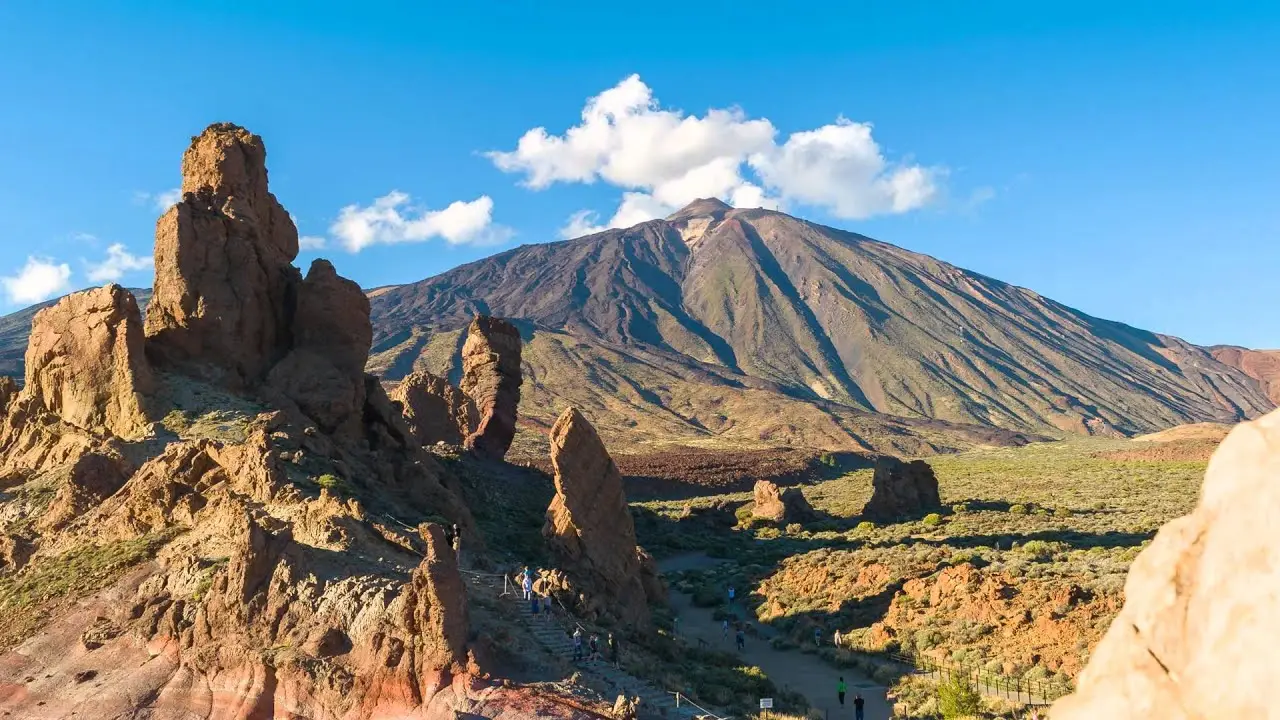
Towering at 3,718 metres above sea level, El Teide is the highest mountain in Spain and the highest peak across all Atlantic islands. Located within the Teide National Park, a UNESCO World Heritage Site, this majestic volcano is surrounded by an otherworldly landscape that combines stark volcanic rock with vibrant endemic flora. Teide National Park, encompassing an area of approximately 190 square kilometres, offers an exceptional setting where visitors can witness the powerful contrast between the lush coastal regions and the arid volcanic environment of the mountain itself.
If you’re looking to visit El Teide and the rest of Tenerife, use these links to book Tenerife flights or book Tenerife accommodation using our partner sites Jetradar and Booking.com.
Does it snow on Teide?
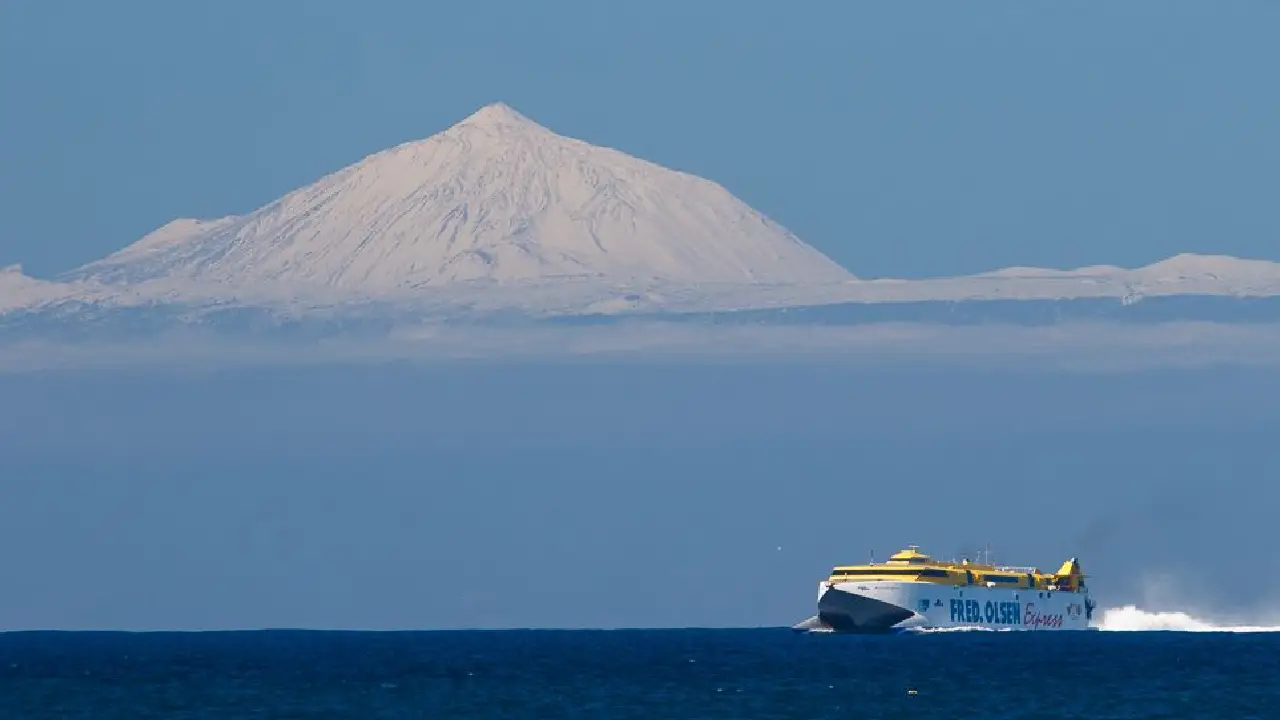
The altitude of Teide means that it often experiences a dramatically different climate compared to the coastal regions of Tenerife, with temperatures at the summit capable of dropping well below freezing in winter, while the beaches below bask in warmth. However, contrary to online rumour, it should be noted there is no skiing on Teide. This mountain’s rugged beauty and unique ecosystems make it a must-visit for nature lovers, geology enthusiasts and anyone who wants to experience something truly unique. Each year, millions of visitors flock to this site, making it one of the most popular natural attractions in Spain. Whether it’s to hike, take in the views or simply to experience the unusual sensation of standing atop Spain’s tallest peak, Teide offers something for everyone.
Teide cable car

A popular way to explore Teide is by using the cable car which ascends from its base at around 2,356 metres up to La Rambleta, at an altitude of approximately 3,555 metres, leaving just a short climb to the summit. This final ascent, however, requires a special permit to help protect the delicate ecosystem at the peak and manage the number of visitors, ensuring the area remains pristine. The hike itself is challenging yet immensely rewarding, offering unparalleled views over Tenerife’s rocky terrain and the distant ocean..
Hiking El Teide
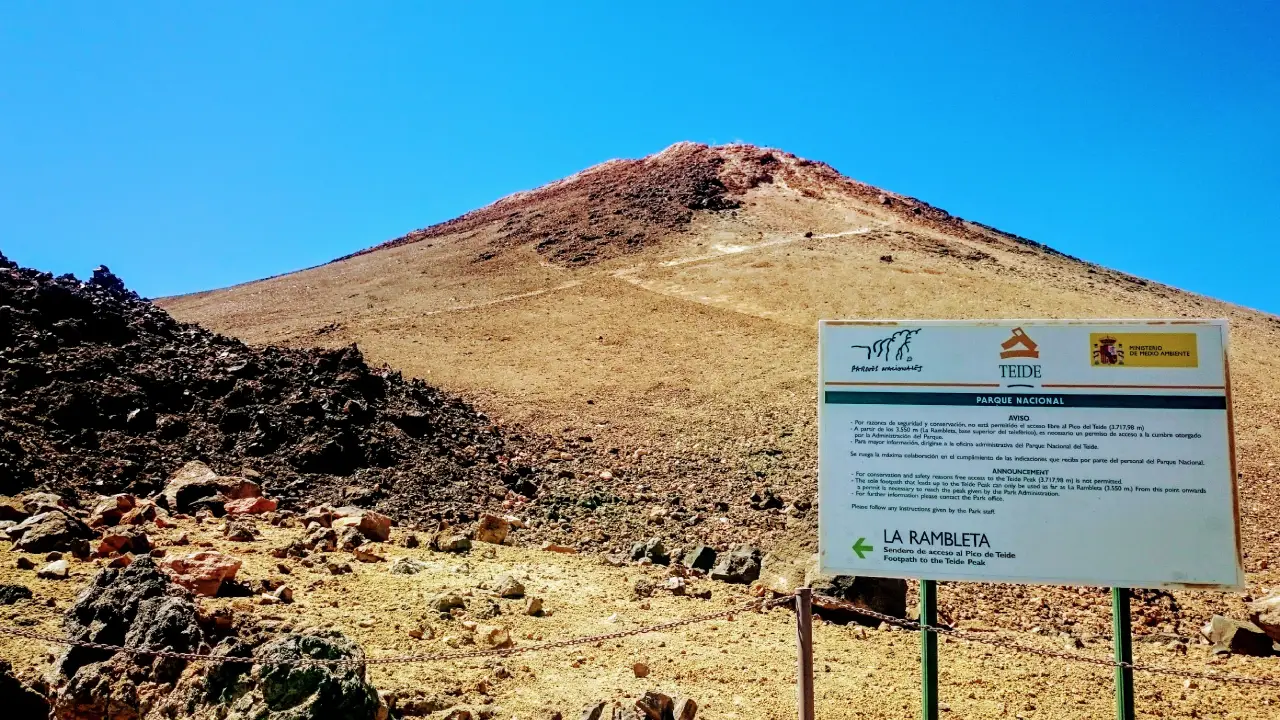
For dedicated hikers, it’s possible to reach the summit from the mountain’s base via a well-marked path, with an elevation gain of over 1,500 metres and an estimated hiking time of around five to six hours. A mountain refuge near the summit allows climbers to spend the night, offering them the chance to witness the sunrise and sunset over the island — a magical experience enhanced by the immense shadow Teide casts over the sea at dawn, which is said to be one of the longest shadows in the world. See our hiking Mount Teide guide for more information.
The view from the summit of Teide
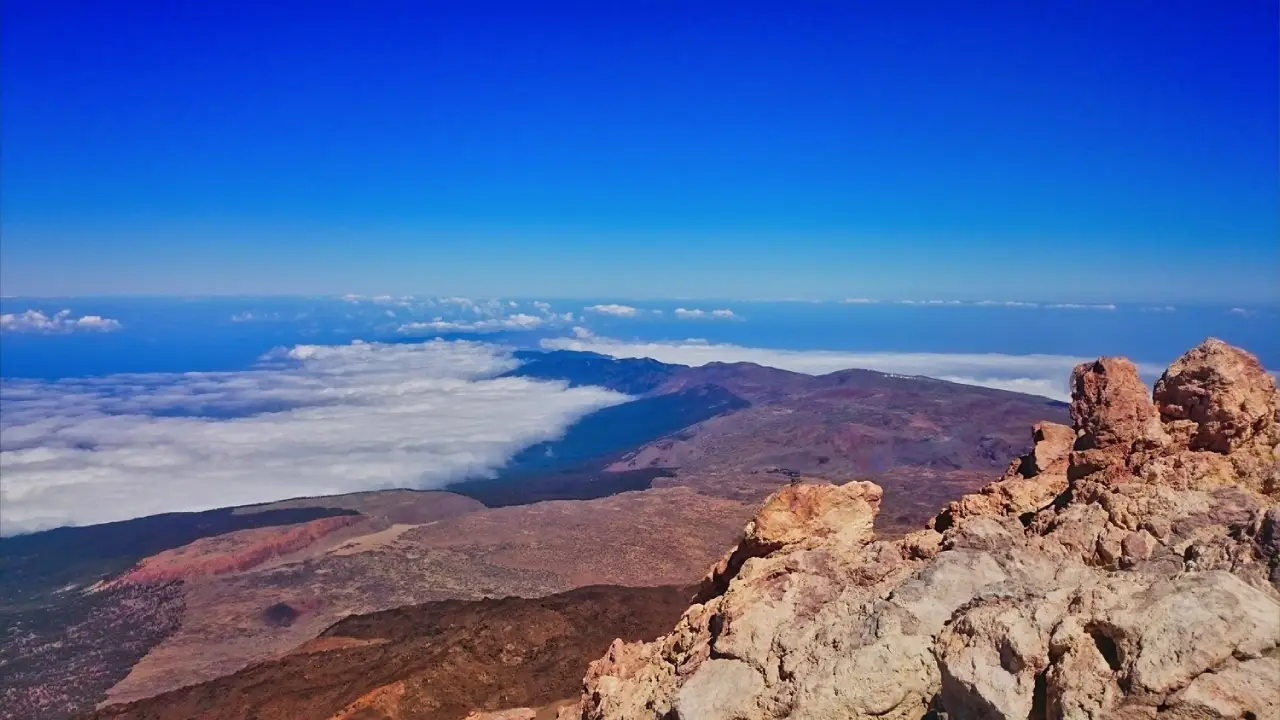
The views from the top are truly spectacular, extending far beyond Tenerife to the neighbouring islands of La Palma, La Gomera, and Gran Canaria. This panoramic vista, coupled with the volcano’s sheer height and unique geography, provides a surreal and humbling perspective of the Atlantic archipelago. From up here, you can clearly see that flat earthers are clearly wrong as the curvature of the planet is easily visible.
See our top five sightseeing attraction on Tenerife article for more information.
The majority of Teide is under the sea

While Teide stands at 3,718 metres above sea level, its total height is even more impressive when measured from its base on the ocean floor, giving a total height of 7,500 metres. This makes Teide the third-tallest volcanic structure in the world, following Mauna Kea and Mauna Loa in Hawaii, which stand at 10,203 metres and 9,170 metres respectively when measured from the seabed. This staggering height solidifies Teide’s place among the most awe-inspiring geological formations on Earth.
Teide, the sleeping giant
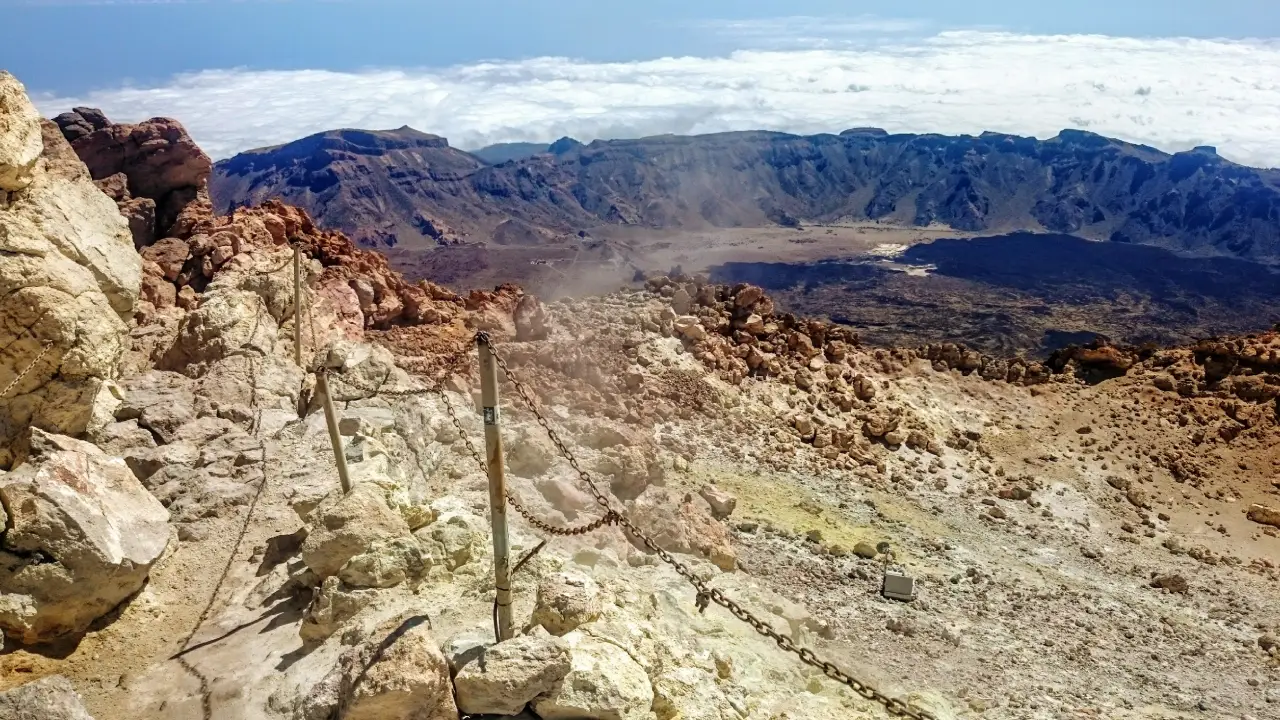
Though often described as a dormant volcano, Teide remains an active geological formation that could erupt in the future. Signs of activity are visible near the summit, where fumaroles emit small amounts of sulphurous gas, giving the rocks around them a yellow tint. These fumaroles are reminders of Teide’s volcanic origins, and the sulphur deposits are a clear indicator that the mountain, though silent, is far from extinct.
Teide is closely monitored for seismic and geothermal activity to ensure the safety of both locals and visitors. This vigilance has become particularly crucial in light of recent eruptions on neighbouring islands. La Palma, one of Tenerife’s closest island neighbours, experienced a significant volcanic eruption in 2021, which led to the formation of new land and served as a reminder of the Canaries’ ongoing volcanic activity. Check our article and video about the La Palma eruption.
Additionally, volcanic activity has recently led to the creation of a new island, La Graciosa, bringing the total number of Canary Islands to eight instead of the previously recognised seven. Beneath the ocean, geological activity continues to shape the region, and another island is slowly forming due to submarine volcanic processes.
Timeline of volcanic activity on Tenerife
- 200,000 years ago: Initial volcanic activity begins on Tenerife, forming the island’s base through repeated eruptions.
- 150,000 years ago: A massive eruption creates the caldera that forms the foundation of Teide and its surrounding peaks.
- 1st century BCE: Historical records from ancient Roman travellers describe volcanic activity in the Canary Islands.
- 1492: Christopher Columbus witnesses an eruption on Tenerife while sailing past the Canaries on his first voyage to the Americas.
- 1706: A significant eruption destroys the town of Garachico (at the time, Tenerife’s main port), disrupting the local economy and altering Tenerife’s landscape.
- 1909: The Chinyero eruption, Tenerife’s most recent eruption, occurs. Though relatively small, it serves as a reminder of the island’s volcanic nature.
- 2000s-Present: Ongoing seismic activity is detected beneath Teide, highlighting the volcano’s continued dormancy but potential for future eruptions. Teide National Park implements monitoring systems to detect early signs of volcanic unrest, ensuring the safety of residents and tourists alike.
Reasons to visit Teide
Visiting Teide is a unique and memorable experience that captures the raw, rugged beauty of Tenerife’s volcanic origins. While many tourists come to Tenerife expecting only sun, sea and sand, the island offers much more — from verdant forests to dramatic cliffs and, of course, the majestic peak of Teide. The road up to the national park offers breathtaking views as it winds through volcanic landscapes, pine forests and barren plains. These views alone make the trip worthwhile, and many cycling enthusiasts and professional athletes, including Tour de France teams, use Tenerife’s challenging terrain as a high-altitude training ground. It’s also worth noting that it’s possible to paraglide off Teide – just not off the summit. The launch site is a little lower and you’ll normally land in Puerto de la Cruz.
Final thoughts
Whether you’re looking to explore the island’s diverse ecosystems, challenge yourself with a high-altitude hike or simply enjoy the serene beauty of Teide’s summit, a visit to this remarkable mountain is an unforgettable experience. It’s a chance to see a side of Tenerife that most people never expect, offering both adventure and tranquillity amid one of the world’s most dramatic landscapes.

